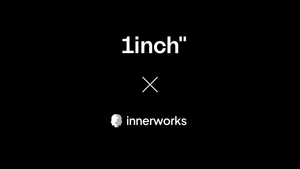Inside Alpenglow: Solana’s consensus upgrade

Alpenglow is Solana’s consensus upgrade that improves speed, efficiency and resilience across the network.
Solana is often associated with high-speed performance and low transaction costs. Behind that speed lies a continuous effort to push the limits of blockchain technology. The latest step in that journey is Alpenglow, Solana’s upcoming consensus upgrade, developed by Anza - a Solana-focused engineering team spun out from Solana Labs - and detailed in a recent white paper.
In simple terms, Alpenglow is designed to make Solana’s consensus both faster and more efficient in how it reaches finality and propagates data, while maintaining security and resilience during network disruptions.
A new foundation for finality
Consensus is the process by which all nodes in a blockchain agree on the same state of transactions. On Solana, this has always been a careful balance between speed, decentralization and safety.
Today, Solana relies on a combination of Proof of History (PoH) - a cryptographic clock that establishes a verifiable order of events - and Tower BFT, a Byzantine Fault Tolerance mechanism optimized to leverage PoH’s timing guarantees. In essence, BFT refers to a family of consensus algorithms designed to keep a distributed network functioning correctly even when some nodes behave maliciously or fail to respond. Tower BFT uses PoH’s timing proofs to enforce exponential lockout periods for validator votes. However, Solana’s consensus dependence on constant validator voting creates significant network overhead and operational cost. It also results in relatively slow deterministic finality - the moment a block is irreversibly confirmed - and makes the network more vulnerable when a portion of validators go offline.
Alpenglow addresses these challenges with a simplified, high-performance consensus layer that can reach finality in as little as one voting round. The new protocol is built around two core components: Votor, which manages block voting and finalization, and Rotor, which handles data propagation across the network. Together, they redefine how Solana validators communicate and confirm transactions, cutting latency, reducing overhead and improving resilience under varying network conditions.
How Alpenglow speeds things up
In most blockchains, finalization speed depends on how quickly validators can exchange messages, and how many communication rounds are needed before they reach agreement. Alpenglow reduces both the number of rounds and the bottlenecks that slow them down.
Votor can finalize a block in a single round if at least 80% of the total stake participates. If fewer validators respond - for example, around 60% - it automatically activates a parallel two-round process. This design keeps blocks finalizing quickly even when parts of the network are delayed or temporarily offline.
Rotor distributes block data using erasure coding - a technique that divides information into fragments and shares them among validators. Each validator contributes bandwidth in proportion to its stake: large validators carry more load, smaller ones less. This ensures efficient use of total network capacity.
The result is lower latency, higher throughput, and more consistent performance even under heavy network load.
The “20 + 20” resilience model
Solana is a proof-of-stake network, meaning its security and decision-making are weighted by the amount of tokens validators have staked – a measure of both commitment and responsibility. Alpenglow introduces a new resilience model known as 20 + 20. In practical terms, it means:
- The network remains safe even if up to 20% of the total stake acts maliciously.
- It remains live - capable of producing new blocks - even if another 20% of the stake goes offline.
This dual-threshold model provides stronger reliability under real-world conditions such as validator outages, network congestion or regional disruptions.
Timeline and rollout
Alpenglow (SIMD-0326) - a major consensus-upgrade proposal for Solana - received overwhelming approval in its governance vote, which concluded on September 2, 2025.The vote recorded 98.27% in favor, 1.05% opposed and 0.69% abstaining, with around 52% of staked tokens participating. The implementation is progressing toward a testnet rollout in late 2025 and mainnet deployment in early 2026.
Why it matters
Alpenglow directly addresses the demand for greater speed and stability by offering:
- Faster block confirmation times through single-round finality
- Better bandwidth utilization that prevents validator capacity from being wasted
- Stronger resilience, keeping the network stable under stress
These upgrades position Solana among the most advanced proof-of-stake blockchains, ready to support high-performance applications such as DeFi protocols, games and real-time data networks.
Stay tuned for more insights from 1inch as we explore the latest trends in DeFi!
Recent Posts

ISO27001 certification reinforces 1inch’s security-first approach
1inch is leading the effort to build safe, compliant DeFi on the road to mass adoption.

1inch’s Anton Bukov: “On-chain and off-chain will complement each other”
During his talk The Future of Flow: from DeFi Primitives to RWAs at TOKEN2049 in Singapore, 1inch co-founder Anton Bukov suggested that off-chain and on-chain finance are likely to complement each other.

1inch partners with Innerworks
This collaboration upgrades DeFi security with AI-powered threat detection.







